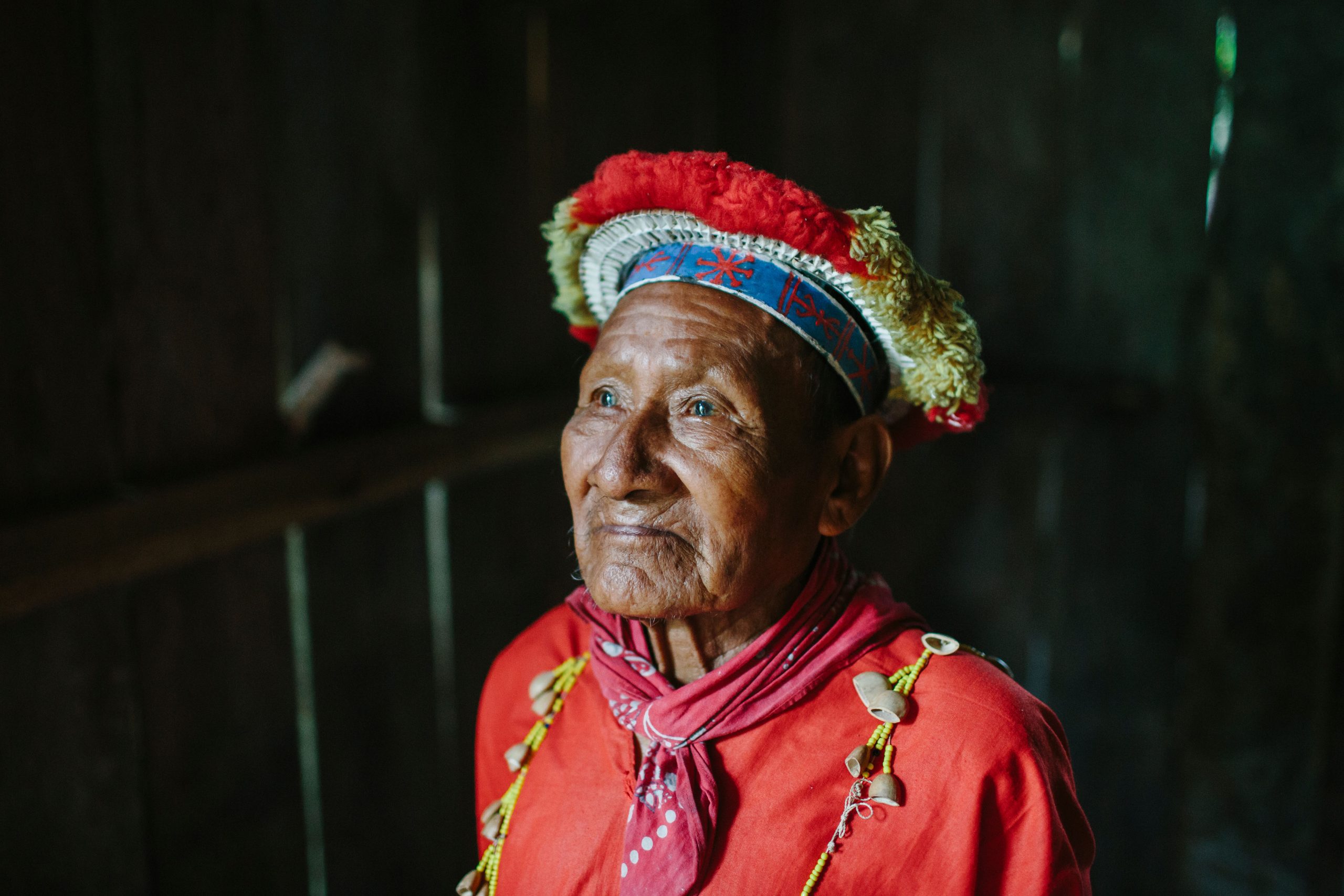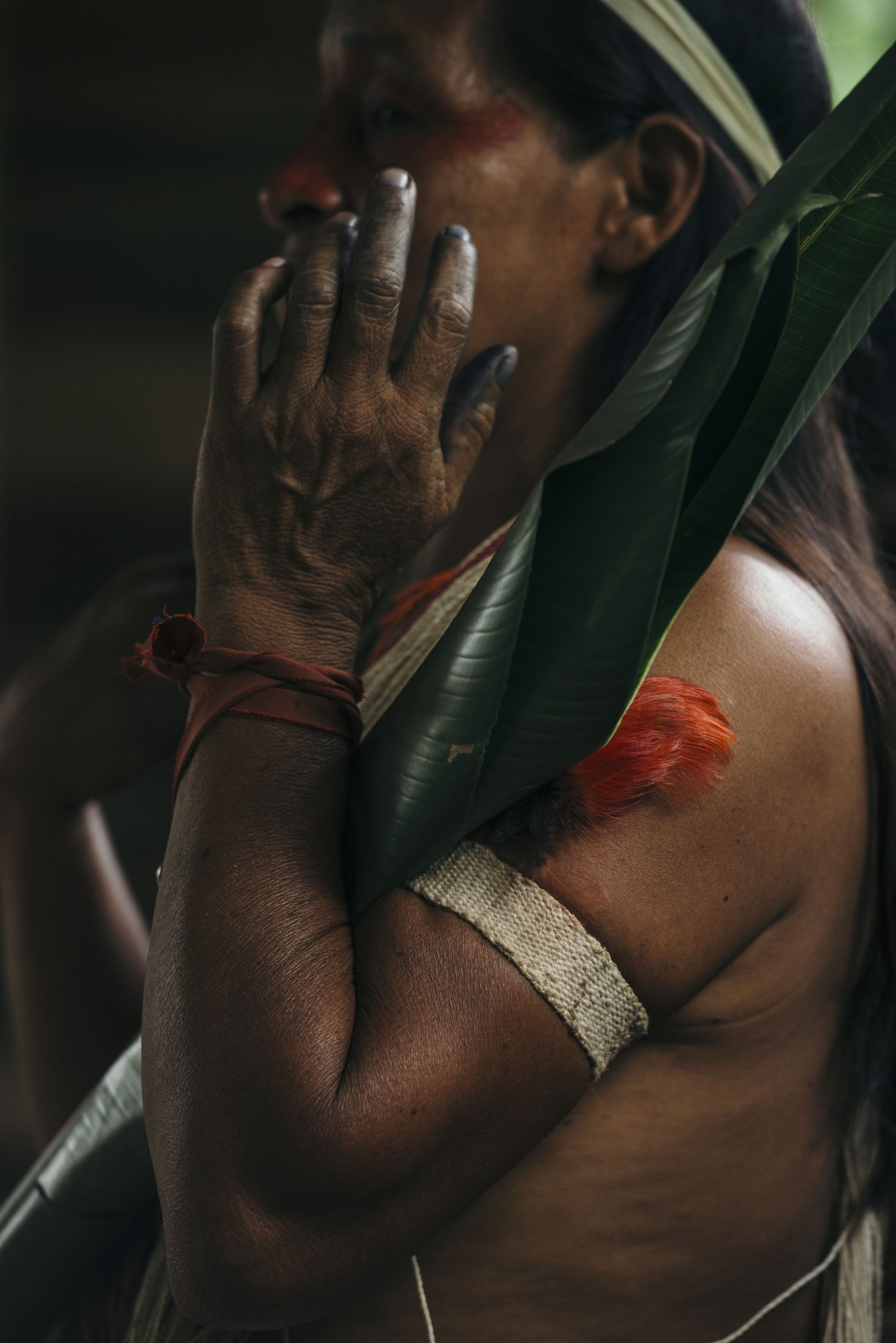
Nine Nations,
One Mission.

The Emberá people live in Panama and western Colombia and number around 50,000 people in Colombia and 33,000 in Panama. The Emberá are a riverine people with a strong cultural and spiritual connection to the rivers and have historically built their homes in the shapes of upside-down boats along the riverbanks. Although most Emberá now live in villages, towns, or urban centers, many communities are still found along waterways. Some of the communities we work with in Alto Bayano have been uprooted and displaced from their historic lands and livelihoods to make way for a hydroelectric dam. While legal protection rights are conceded in the collective territories of the Emberá-Wounaan (Comarca) in the Darien tropical forest, where we also work, illegal cattle ranching and logging continue. Although these developments have intensified and continue to increase land displacement, environmental, health and cultural degradation, the Emberá preserve and celebrate their rich cultural identity with their colorful handicrafts and clothing, as well as their immense medicinal knowledge.
The Cabécar people are Costa Rica’s second largest Indigenous group numbering approximately 14,000 people. Most Cabécar live in remote areas such as the Talamanca rainforest. Due to harsh topographical and climatic conditions and the lack of roads, most of their territories are extremely difficult to reach, meaning that they must walk for several hours to several days to reach the nearest road or village. The relative isolation of the Cabécar has allowed them to maintain their culture, traditions, and spiritual identity, which are grounded in the forest mountain, where the supernatural world of their deities remains. While they have limited access to basic services like education, energy, health care, transportation, and income opportunities, they are actively revitalizing their traditional agroforestry system, creating alternative pathways to climate disruptions and external threats such as the expansion of agribusiness for banana and plantain monocultures and deforestation for cattle ranching.
The Bribrí, one of Costa Rica’s largest Indigenous groups with approximately 10,000 people, have historically lived in the Talamanca mountain range in southern Costa Rica, bordering Panama, along the Sixaola and Yorkín rivers, and in the Salitre and Cabagra reserves in the province of Puntarenas. Approximately 7,000 Bribrí live in the Talamanca region, a land of contrasts between ancestral practices and industrial agriculture with heavy use of pesticides. Like the Cabécar, the Bribrí are one of the few matrilineal societies in the world where land is traditionally passed from mother to daughter. The Bribrí culture is transmitted through family clans, of which there are 13 in the Talamanca region, each dedicated to a specific animal. The Bribrí have a rich artistic and musical tradition and are subsistence farmers, growing cacao and bananas along with corn, beans and tubers, as well as raising pigs, hunting birds and fishing.
The A’i Cofán live between the Aguarico River in the northern Amazon of Ecuador’s Sucumbios Province and the Guamés River in southern Colombia. Descendants of ancient riverine peoples, their total population is about 2,100. It is estimated that the Cofán (or A’i, as they are called in their language) numbered between 15,000 and 20,000 before a brutal history of colonization, violence and epidemics. The A’i Cofán are skilled hunter-gatherers, fishermen, and navigators with great cosmological and medicinal wisdom. But oil extraction and the Texaco-Chevron oil scandal, one of the world’s most tragic systematic environmental and social disasters, have contaminated their lands, waters and bodies. Health problems such as cancer and skin diseases related to oil extraction are widespread in Cofán communities, where only small islands of forest remain. Nonetheless, many A’i Cofán are reviving their cultural practices and knowledge of plants, food, handicraft materials, and traditional medicines.
The Waorani people, numbering approximately 2,000, are a relatively isolated Indigenous nation living in the eastern Amazon region of Ecuador in the provinces of Pastaza, Napo and Orellana. The Waorani once occupied one of the largest territories of any Indigenous Amazonian people in Ecuador, living as forest hunters and gatherers in the heart of the Ecuadorian Amazon for hundreds of years. Despite missionary efforts to convert and culturally assimilate the Waorani, they have largely retained their distinctive cosmovision and continue to be known as skilled warriors, as they have defended their ancestral territory from local and colonial enemies. In the last decades, however, their territories have been greatly reduced, and encroached by logging, oil exploration, colonist settlement, and illegal land registration practices. Their economy is based on subsistence agriculture on temporary plots of land, as well as hunting, fishing, fruit harvesting, and the production of handicrafts.
The Siona live along the Putumayo River and its tributaries in the Amazonian regions of Colombia and Ecuador, and in Ecuador number about 400 individuals spread over several communities in the province of Sucumbios. They are also known as the Zio Bain, or “people who cultivate the land,” because traditionally the Siona have subsisted by hunting, fishing, cultivating small plots of land, and harvesting rainforest products. Today, these practices are threatened by the impacts of globalization and outside cultural influences. Although they have often been grouped with the Secoya, the Siona are asserting their own identity. Like the Secoya, they face environmental challenges from oil drilling, deforestation, palm oil cultivation, and the spread of non-Indigenous settlements. Despite these pressures, the Siona are determined to preserve their ancestral ways while navigating the demands of the modern world.
The Secoya-Siekopai currently number about 1600, of which 900 live in Peru and 700 in Ecuador, where they live in a 50,000-acre fragment of rainforest surrounded by oil extraction and oil palm monoculture plantations. In Ecuador, the Secoya live in only three communities along the Aguarico River: San Pablo de Katetsiaya, Siecoya Remolino Ñe’ñena and Eno. Historically, the Siekopai numbered over 30,000 and had an immense territory that stretched an estimated 7 million acres from Ecuador into Colombia and Peru. The colonizers and missionaries brought diseases such as influenza and measles that wiped out 90% of their population, and entire clans and groups disappeared. Heavily impacted by rubber tappers and the oil industry, their lands and waterways continue to be threatened and contaminated by gold mining, vast palm oil plantations and road construction plans. The Siekopai have great ancestral wealth, shamanic wisdom and a profound knowledge of medicinal plants.
The Kichwa (or Quichua) people of the Amazon include the Napo Kichwa and the Pastaza or Canelo Kichwa, who share the same linguistic and cultural traditions. Agriculture is the main economic activity, which is complemented with hunting and fishing. Their territory contains some of the most biodiverse forests on the planet. While, their land is not permanently protected and continues to be the focus of potential new drilling plans, the Kichwa like other Indigenous Nations in the Amazon have become a symbol of resilience and resistance in Ecuador and beyond. They are reclaiming their land and traditional knowledge, advocating for the protection of their forests and the full exercise of their rights, and leading the way in advancing environmental and climate protection based on their Indigenous wisdom and traditional land management.
The Shuar belong to the Jivaroan ethno-linguistic group and live in the upper Amazon region of Ecuador as well as in the bordering region of Peru. They are the second largest Indigenous nation in Ecuador with an estimated population ranging from around 40,000 to 90,000 people. The territory of the Shuar has approximately 233,169.73 hectares and is composed of 6 Shuar Associations that group around 47 communities. Their territory is part of a biocultural corridor that connects the tropical Andes with the Amazon rainforest. Like other Indigenous nationalities, the Shuar protect large areas of biological importance as water sources and niches of immense biodiversity, thus protecting the Amazon rainforest, their culture and sacred spaces. In terms of economic and productive activities, the Shuar have maintained their self-sufficient agricultural activity. Subsistence agriculture is based on ajas, a traditional Shuar agricultural system, which is integrated into the rainforest.

Explore our
Six Impact Areas
